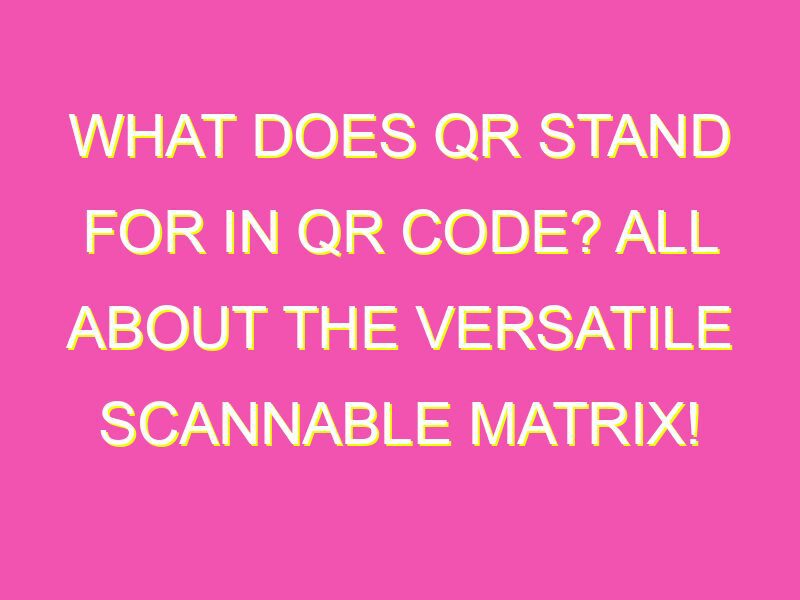Quick Response (QR) codes are changing the game for how we access information. First invented in 1994, these two-dimensional barcodes have gained popularity over the years due to their convenience and versatility. Wondering what makes QR codes so interesting?
Think of QR codes as your personal shortcut to accessing just about anything. Whether you’re a business owner or just a curious individual, QR codes offer a simple and effective way to share and receive information. So the next time you see a QR code, give it a scan and discover something new!
Understanding QR Codes
QR codes have become an integral part of our digital world over the years. They are two-dimensional barcodes that hold a significant amount of information, which can be quickly accessed by mobile devices. These codes were initially used in the manufacturing process to track inventory, but they have gained more widespread use due to their convenience and versatility.
The Origin of QR Codes
QR codes were first created in 1994 by Denso Wave, a subsidiary of Toyota, in Japan. They were designed to be more efficient than the traditional barcode, which could only hold up to 20 alphanumeric characters. The initial purpose of the QR code was to track vehicles and their parts during the manufacturing process. Since then, QR codes have evolved into more than just tracking tools; they are now widely used in various sectors, including marketing, advertising, and education.
What Does QR Stand for?
QR is the abbreviation for “quick response.” It accurately describes what a QR code does – it allows quick access to information. Unlike other barcodes, QR codes are more effortless to scan and can hold a more significant amount of data. Think of QR codes as an electronic hyperlink that connects the physical world to the digital world. They are widely used in marketing campaigns, event tickets, and educational materials.
How Do QR Codes Work?
QR codes work by using a mobile device camera to scan the code, which then directs the user to a specific website or webpage. The process involves four basic steps:
- A user opens their QR code reader app on their mobile device.
- The camera on the mobile device scans the QR code.
- The QR code reader interprets the information stored in the code.
- The user is then directed to the associated web page, video, or contact information stored in the code.
QR Code Applications
QR codes have numerous applications, including:
- Marketing campaigns. Brands use QR codes in advertising and direct mailing as an effective call to action for customers.
- Event tickets. QR codes have replaced traditional tickets in many events, and they can be scanned and validated at the entrance for ease of access.
- Payments. QR Codes are used in mobile payment platforms like Alipay, WeChat, and PayPal.
- Education. QR codes can be used in textbooks and lesson materials as an interactive way to access videos and graphics on a particular topic.
The Future of QR Codes
The adoption of QR codes has grown over the past five years with more than 11 million households in the United States scanning QR codes. QR codes have become an integral part of our daily lives, and their adoption has no signs of slowing down. They are expected to become more commonly used in retail payments, restaurant menus, and informational billboards in the future.
QR Codes and Marketing Strategies
QR codes have emerged as a valuable asset for marketers over time. They offer an innovative way to engage customers and provide an interactive experience for the user. Marketers can collect data about user trends, interests, and preferences from QR codes, which can help them tailor their marketing strategies for maximum impact. QR codes can help businesses achieve their sales goals, increase customer engagement, and broaden their brand reach.
In conclusion, QR codes have grown in popularity due to their versatility, ease of use, and convenience. They have become an essential part of our digital lives, making our experiences more interactive and seamless. QR codes are expected to continue evolving into more advanced forms that will make our lives even easier, and businesses should keep up with these trends to remain relevant in the fast-paced digital world.





